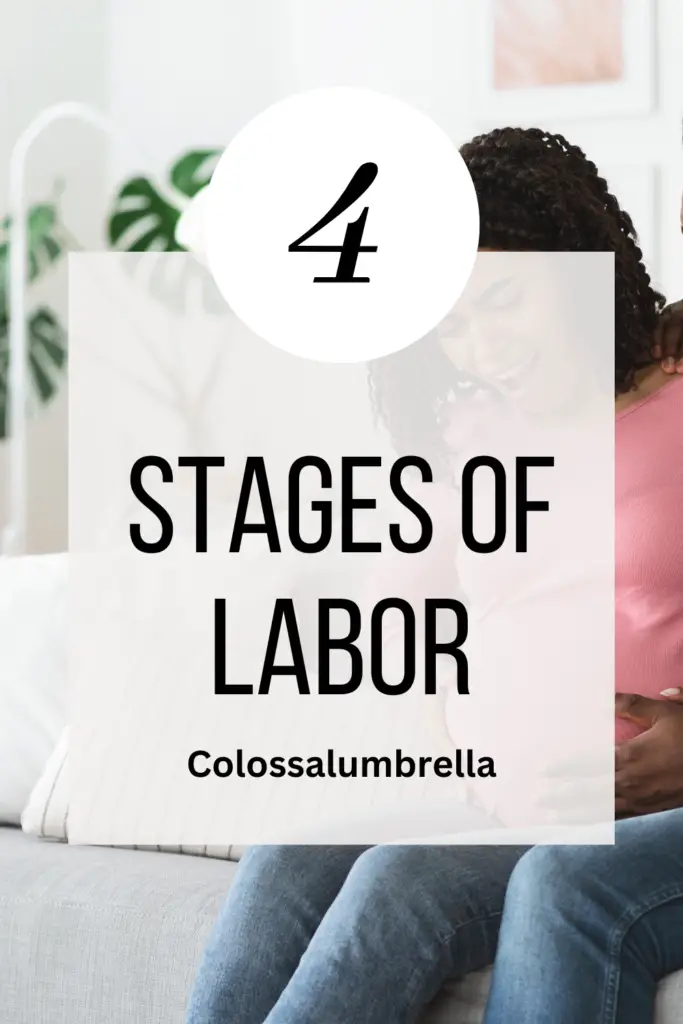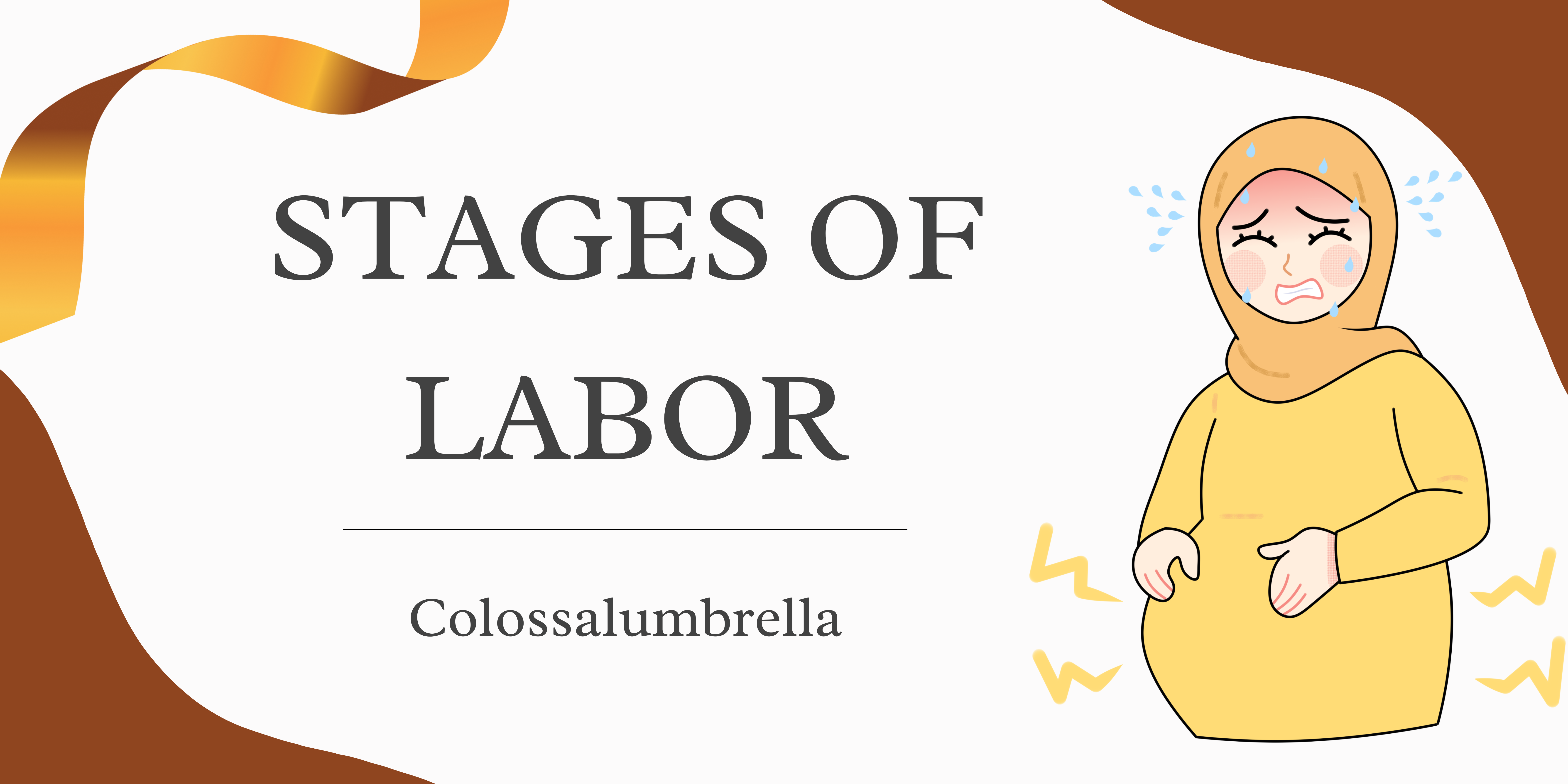Contents
4 Stages of Labor
As someone who has been through the journey of childbirth, I can tell you that it is a rollercoaster ride like no other. From the excitement, nervousness and anticipation of the first stage, to the pain and exhaustion of the second stage, and the relief and surprise of the third stage, and finally the overwhelming emotions of the postpartum period, it’s a journey that’s filled with all sorts of feelings.
I remember feeling a mix of nervousness and excitement as my contractions started and my body began to prepare for labor. I was confused and at the same time nervous. And once it really kicked in, I was in a world of pain and exhaustion that I couldn’t have imagined. Once my little one was finally in my arms, I felt a wave of relief and surprise that it was over and that I’d actually done it. Little did I know what was coming next.
The postpartum period for me was a mix of overwhelming joy and anxiety, exhaustion, and a sense of being completely lost in this new role of being a parent. Plus a lot of advice from non concerned people. Through all the ups and downs, one thing is for sure, the journey of childbirth is one that’s filled with human emotions that are both raw and beautiful.
So, in this blog post, we’re going to dive into the 4 stages of labor, but also talk about the emotions that come with it. Because, childbirth isn’t just a physical journey, it’s an emotional one too. Let us take a journey through the 4 stages of labor, with all the human emotions that come with it.
The 4 Stages of Labor
Before I dive into the four stages of labor, let’s talk about what labor actually is. Labor is the process by which the uterus contracts and pushes the baby out of the birth canal. It’s a natural and normal process, but it can also be intense and painful.
The four stages of labor are divided into early labor, active labor, pushing and delivery, and delivering the placenta. Each stage has its own unique characteristics, coping techniques, and misconceptions.
First Stage of Labor – Early Labor to Active Labor
The first stage of labor is the longest stage, and it can last anywhere from a few hours to a few days. During this stage, the cervix begins to dilate and efface (thin out). Contractions will become more frequent and intense, but they may be irregular at first.
Many women cope with the early stage of labor by taking warm baths, going for walks, or practicing relaxation techniques like deep breathing or visualization. It is important to stay hydrated and nourished during this stage, but many women experience food aversions or cravings.
One common misconception about the first stage of labor is that it’s only “real” labor when contractions are a certain length or intensity. In reality, every woman experiences labor differently, and it’s important to trust your body and seek medical attention if you’re unsure.
Second Stage of Labor – Pushing and Delivery
The second stage of labor is when the cervix is fully dilated (10 cm) and it’s time to push the baby out. This stage can last anywhere from a few minutes to a few hours, and it’s often the most intense and physically demanding stage of labor.
Many women cope with the second stage of labor by using different positions like squatting or leaning forward, and by pushing with the contractions. It’s important to listen to your body and communicate with your healthcare provider during this stage.
One common misconception about the second stage of labor is that it’s always painful or traumatic. While it can be intense and challenging, many women also describe it as empowering and life-changing.
Third Stage of Labor – Delivering the Placenta
The third stage of labor is when the placenta (which nourished the baby during pregnancy) is delivered. This stage usually only lasts a few minutes, and contractions will continue to help the placenta detach from the uterine wall.
Many women cope with the third stage of labor by focusing on their breathing and allowing their body to naturally expel the placenta. It’s important to stay alert and communicate with your healthcare provider during this stage, as some medical interventions may be necessary.
One common misconception about the third stage of labor is that it’s not important or significant. However, delivering the placenta is crucial for preventing bleeding and ensuring a healthy recovery.
Fourth Stage of Labor – Recovery and Postpartum
The fourth stage of labor is the period immediately after delivery, and it can last anywhere from a few hours to a few days. During this stage, the uterus will continue to contract and firm up, and you may experience bleeding or cramping.
Many women cope with the fourth stage of labor by resting and bonding with their baby, and by using pain management techniques like ice packs or medication. It’s important to prioritize your physical and emotional recovery during this stage, and to seek medical attention if you experience any concerning symptoms.
One common misconception about the fourth stage of labor is that it’s the end of the process. However, recovery and postpartum care are ongoing and can last for weeks or months after delivery.

Coping Techniques for Each Stage of Labor
Throughout the four stages of labor, there are many coping techniques that can help ease the intensity and discomfort. Some common techniques include:
- Relaxation techniques like deep breathing, visualization, or meditation
- Physical movement like walking, rocking, or changing positions
- Pain management options like medication, heat or cold therapy, or massage
- Emotional support from a partner, doula, or healthcare provider
- Self-care practices like staying hydrated, nourished, and rested
Common Misconceptions About the 4 Stages of Labor
I’ve heard many misconceptions about the four stages of labor. Some of the most common misconceptions include:
- Labor is always painful and traumatic
- It’s only “real” labor when contractions are a certain length or intensity
- A birth plan is unnecessary or unrealistic
- Medical interventions like induction or epidurals are always harmful or unnecessary
It’s important to educate yourself about the four stages of labor and to communicate openly with your healthcare provider about your preferences and concerns.
The Importance of a Birth Plan for Each Stage of Labor
A birth plan is a written document that outlines your preferences for labor and delivery, including your preferences for pain management, medical interventions, and postpartum care. It’s important to have a birth plan in place for each stage of labor, as it can help you communicate your preferences and feel more empowered during the process.
Medical Interventions During Labor and Delivery
While every woman’s labor and delivery experience is unique, there are some medical interventions that may be necessary or helpful during the process. Some common interventions include:
- Induction, which is the process of starting labor with medication or other methods
- Epidurals, which are a form of pain management that involves medication injected into the spine
- Cesarean delivery, which is a surgical procedure to deliver the baby through an incision in the abdomen and uterus
- Forceps or vacuum delivery, which are methods of assisting with delivery if the baby is not progressing
Conclusion
We’ve journeyed through the 4 stages of labor, and let me tell you, it was a wild ride. We laughed, we cried, we made jokes about ice chips and hospital gowns.
But in all seriousness, childbirth is an experience like no other. It’s raw, beautiful, and downright hilarious at times. From the “ring of fire” to the endless supply of dad jokes from your partner, there’s never a dull moment.
And while we may have focused on the physical stages of labor, it’s important to remember that the emotional journey is just as important. The nervousness, excitement, pain, relief, and joy are all part of the experience, and it’s okay to feel all of it.
So, to all the soon-to-be moms out there, don’t be afraid to embrace the journey. It may be a rollercoaster ride, but hey, at least it’s a free one. And to all the dads, partners, and support systems, keep the ice chips coming and the jokes flowing.
In conclusion, the 4 stages of labor may seem daunting, but with a little laughter and a lot of love, you’ll make it through just fine. As the old saying goes, “No pain, no gain.” And let me tell you, the gain is worth it.
Are you preparing for labor and delivery? What coping techniques or misconceptions have you encountered? Share your thoughts in the comments below.
4 Stages of Labor
More for Pregnant Moms
- 10 Unsafe Household Activities to Avoid During Pregnancy
- When to Stop Bending During Pregnancy: Tips and Guidelines
- 10 Warning signs of overdoing it during pregnancy
- Which cough syrup is safe in pregnancy? Comprehensive Guide
- Can You Take Azo While Pregnant for UTI treatment? Know the risks and simple facts
I would stay connected and keep you updated with parenting tips, pregnancy guides, creative ideas, easy crafts, and Free Printables. Subscribe to Colossalumbrella to get new ideas delivered to your inbox. Follow me on Facebook, Pinterest, Twitter, and Instagram.
Disclaimer: The content of this blog is for informational purposes only and is not intended to be a substitute for professional medical advice, diagnosis, or treatment. Always seek the advice of your physician or other qualified healthcare providers with any questions you may have regarding a medical condition.
